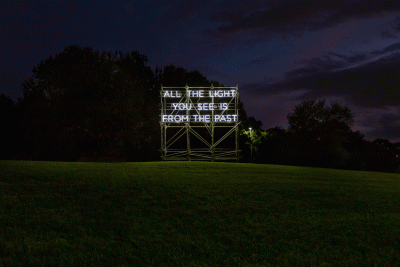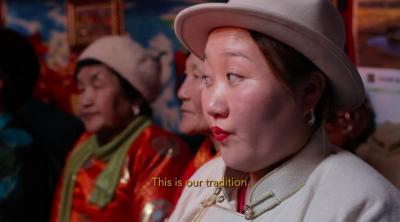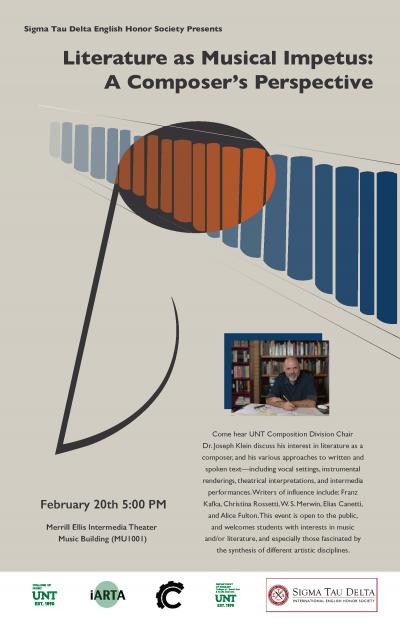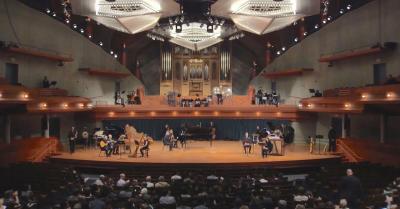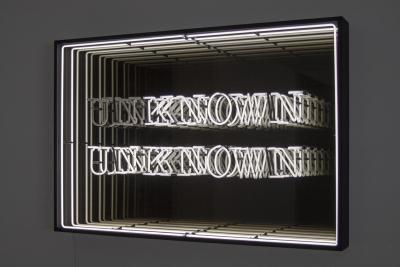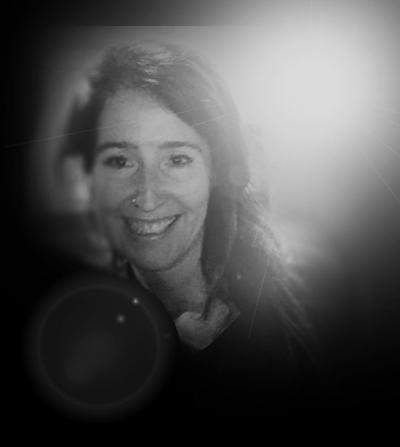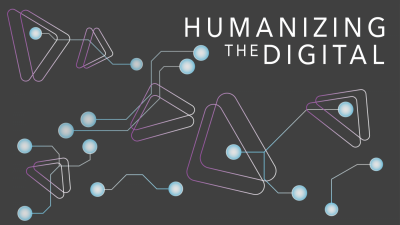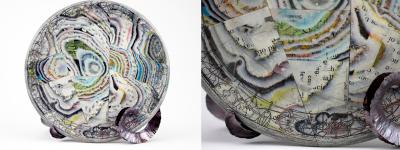This flashing neon sign by Alicia Eggert cycles through the statements "All the light you see is from the past" and "All you see is past" before turning off completely. It speaks to the fact that light takes time to travel, so by the time it reaches your eyes, everything you are seeing is technically already in the past. Light from the moon left its surface 1.5 seconds ago; sunlight travels for 8 minutes and 19 seconds before it touches your skin. The farther out into space we look, the farther back in time we can see.
This sign's 1st edition is permanently installed on the roof of 2517 West Girard Avenue in Philadelphia.
The 2nd and 3rd editions have been included in the Amsterdam Light Festival (2018), Aurora: Future Worlds in Dallas (2018), and New Glass Now at the Corning Museum of Glass in New York (2019).


